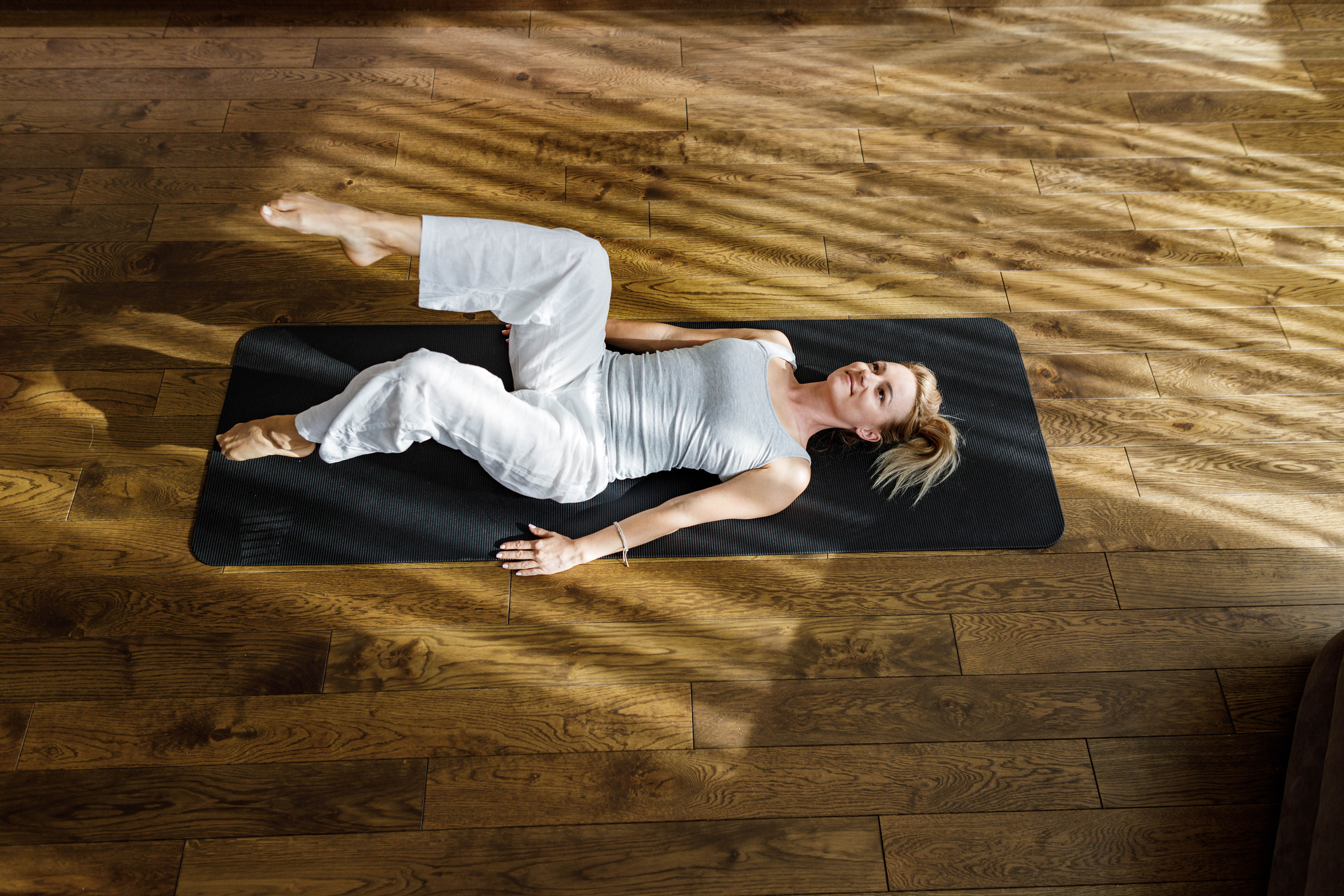Blog
The core move every trainer recommends is harder than it looks—here are the modifications that worked for me

Have you ever attempted a popular core move only to realize you’re not quite nailing it? It happens to me and I’m a fitness editor and qualified personal trainer. My problem exercise is the dead bug and, despite being widely recommended, I’ve rarely come across trainers who offer modifications—it’s assumed everyone can do it.
The move targets the deep abdominal muscles that support spinal health and stability, and requires lower core strength and limb coordination. So it rightly earns its reputation as one of the most effective core stabilization exercises around.
But after rehabbing a bulging disc, I learned firsthand how hard the dead bug can be, especially when your core isn’t ready or your technique isn’t right.
After receiving a steroid injection to treat my disc issue, my core strength had taken a huge hit and many movements aggravated my sciatic nerve.
My physiotherapist programmed modified versions of the dead bug to safely rebuild my lower core and improve muscle engagement.
If you’re new to exercise, these modifications and progressions may help you to get the most from your dead bug too—because it’s well worth mastering.
How to do the dead bug
- Lie on your back with your legs raised and knees bent to 90°, and your arms extended up.
- Engage your core and press your lower back into the floor.
- Simultaneously, lower your left arm and extend and lower your right leg until your left thumb and right heel lightly touch the floor.
- Reverse the movements to return to the starting position and repeat on the other side.
- Continue, alternating sides with each rep, moving slowly and with control.
If your lower back arches off the floor when you extend your limbs fully, you need a modification.
Start by reducing your range of motion, not lowering your limbs fully to the floor. Pause just before your back starts to arch.
Still struggling? Try the following modifications.
Dead bug modifications
Dead bug heel tap
The first step is to simplify the move by removing the arm movement and focusing on tapping only your heels to the floor.
“If you keep your hands planted next to your hips, it will help stabilize the legs and focus on engagement through your core muscles,” says Dana Irvin, sports and clinical therapist and founder of Movement RX.
This variation also removes the need for complex coordination—something else I’ve struggled with, even before injury.
“By removing hands from the dead bug, it would also help someone struggling with the coordination of extending opposite hands and legs,” says Irvin.
Without the distraction of opposite-limb movement, you can focus on that all-important connection between your lower back and the floor.
If you struggle to tap with straight legs, keep a slight bend in your knees. I stuck with bent knee heel taps for several weeks before progressing.
Banded dead bug
Once you’ve mastered heel tap with stable hips and lower core engagement, it’s time to progress.
Grab a short-loop resistance band (like this affordable set from Amazon) and place it around your feet. Perform the same alternate heel taps while stabilizing your core against the pull of the band.
“If you add a short-looped resistance band around your feet this will add resistance to your muscles and increase the load for your abductor muscles,” says Irvin.
“It also allows you to add progressive overload to the dead bug by using a heavier band to increase the resistance when you’re ready to.”
Further progressions
After several months of doing these modifications consistently, I eventually reestablished enough core strength to add two further progressions:
- Arms overhead with shoulders lifted—this engages more of your upper core, while maintaining lower core activation.
- Holding a light weight overhead—some resistance while keeping the shoulders off the ground increases the intensity across your entire core.
Remember, mastering the dead bug to reap the rewards is about quality moves that are slow and controlled.












